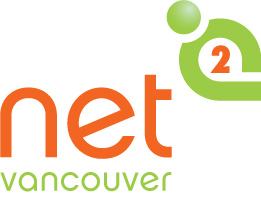When understanding what nonprofit board governance is, the question of proper management immediately becomes relevant. The quality of the organization’s overall performance and its individual structures depends on this. Today, nonprofit board management is also subject to modernization and improvements through the use of data rooms. This ensures reliability, efficiency, and security. The importance of board software (or online board portals) is highlighted by the need to protect all documentation and control access to specific information. In this article, read more about free tools for these purposes and its features.
Key Features of Free Board Management Software for Nonprofits
Board management software features can simplify many tasks and streamline the process. We invite you to explore the list of key features of such a solution that will leave no one indifferent:
- Efficient document management and file handling. Nonprofit board tools facilitate document distribution among all authorized individuals, ensuring the security of files. It also allows for organizing and exchanging documents with board members, reducing the risk of information loss and providing easy access to critical materials.
- Access control among organization representatives. This is crucial not only in small firms but also in the board portal for government. It provides the ability to precisely manage access levels to information, ensuring data confidentiality and reducing the risk of unauthorized access.
- Collaboration and effective time management. The software enables board members to collaborate, exchange opinions, and make decisions online, improving communication and reducing the need for physical meetings.
- Task allocation and meeting scheduling. It guarantees the ability to create tasks, assign responsibilities, and set deadlines, contributing to more efficient planning and task execution.
- Quality analytics and company reports. The software provides tools for analyzing board performance, creating reports, and identifying trends, aiding in making well-informed decisions.
- Mobile access anytime, anywhere. The ability to work with the software via mobile devices offers board members flexibility and accessibility at all times and in any location.
As evident from the above list, there are numerous advantages. Therefore, the adoption of such software is becoming increasingly popular. This solution helps navigate the flow of information more effectively and distribute responsibilities among organization members.
Top Free Board Management Software Options for Nonprofits
Free nonprofit board tools can help solve a good deal of business management and document workflow tasks. Such options can assist in determining the functions that are necessary and the importance of such a solution specifically for your organization. Afterward, you can explore top board management solutions in a paid mode with enhanced capabilities.
In the table below, we provide a brief overview of interesting free solutions. Take a look to compare the services available on the market:
| Name | Features | Suitability |
| Trello | Simple interface, cards, labels, calendar | Task and project organization |
| Asana | Task and project management, calendar | Project management and collaboration |
| Notion | Flexible block system, board creation, databases | Information and project organization |
| ClickUp | Various task types, calendar, integrations | Comprehensive project and task management |
| Bitrix24 | CRM, tasks, calendar, chat, integrations | Comprehensive management and communication |
| Wrike | Task management, project planning | Project management and reporting |
| Zenkit | Flexible task management, tables | Various management styles and needs |
These are just a part of the available options. There are many more outs there. Consider the presence of the required features and the reliability of the company when making your choice. Please ensure that the selected free software guarantees a high level of security.
Maximizing the Benefits: Tips for Implementing Free Board Management Software
Implementing board software can address many organizational issues. To do this effectively, consider the following aspects when integrating programs into your company’s operations:
- Before selecting free board software, identify the functions and tools most critical for your nonprofit organization. This will help you choose the right solution.
- Ensure that employees and board members receive training on using the selected portal. This will help maximize its capabilities.
- Define clear processes and usage standards for the programs. This will prevent confusion and inefficient usage.
- Create user guides and instructions for using the software. This will help users quickly orient themselves and troubleshoot issues.
- Utilize the software’s capabilities to create reports and analyze board activities. This will support informed decision-making.
- Pay special attention to data security. Regularly update the software and implement data protection measures.
- Verify if the selected apps can integrate with other tools used by your organization to enhance efficiency.
- Find out about software updates and the level of support provided for free software to ensure long-term stability.
- Engage with other nonprofit organizations to exchange experiences on using board management software.
- Continuously evaluate the effectiveness of technology usage and the readiness of staff. Make adjustments as needed.
These best practices for board management will simplify and streamline the process. Everything will now be in one place, making it easier to delegate tasks. Read more about such programs on our blog and keep learning every day!
Summary
This article discusses the importance of nonprofit board governance and how it can be improved through the use of free board management software. The software offers features such as efficient document management, access control, collaboration tools, task allocation, analytics, and mobile access. Overall, the article highlights the benefits of adopting board management software for nonprofit organizations.
